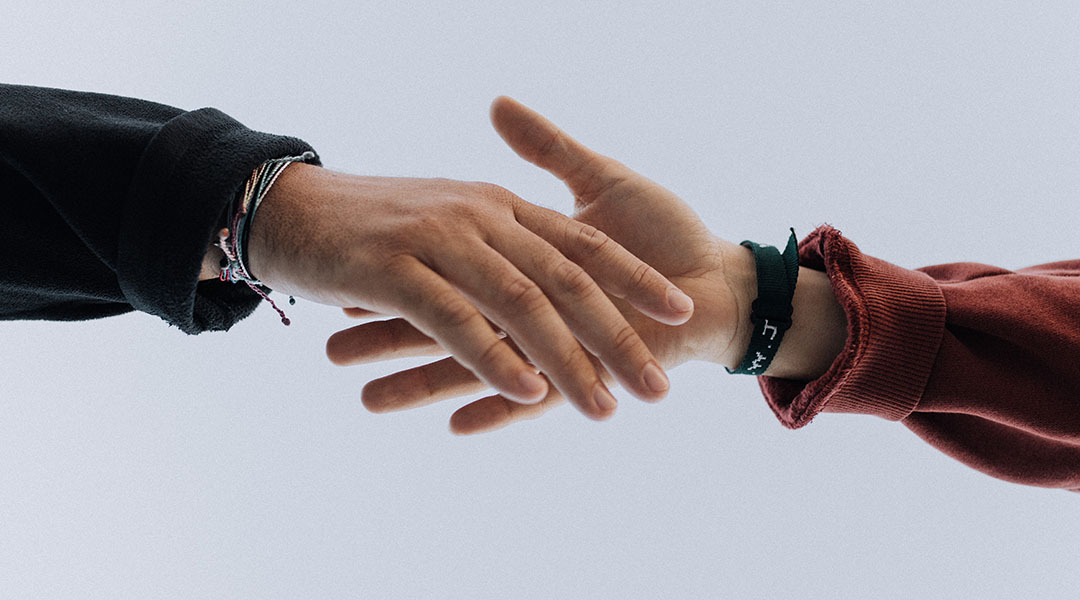Social touch strengthens human bonding and connection, and while the link between social touch and the hormone oxytocin is well-established in rodents, it’s less understood in humans.
Now, a new study reports that feelings of pleasantness accompanying a partner’s caress persist and influence our response to a stranger’s touch. Conversely, the discomfort from a stranger’s touch can linger and dull the satisfaction gained from a partner’s subsequent stroke.
“I think the biggest take-home message from the findings is that your hormones and brain work together in a flexible way to adjust to circumstances — who you are interacting with, what is happening now, and what has already happened — and that these adjustments can in turn affect the future ‘configuration’ of the system, at least in the near term,” said India Morrison, of the Linköping University, in Sweden, in an email to ASN.
The love hormone
Often known as the love hormone, oxytocin regulates the body’s response to social touch in rodents and humans. The stress hormone, cortisol, on the other hand, modulates our response to danger. The interplay of oxytocin and cortisol in regulating emotion and behavior, depends on context and familiarity, according to a variety of studies from rats to chimpanzees.
“The role of oxytocin in social interactions is likely to be slightly different depending on the particular species, because even though oxytocin is part of a ‘toolkit’ inherited from our common ancestors, each species has its own spin on social behavior,” said Morrison.
In rats, social touch leads to oxytocin release in the brain, and is dependent on the animal’s bodily conditions. But oxytocin’s role in social bonding or regulating stress is less understood in humans.
Morrison and colleagues explored how social touch — from a partner or stranger—would alter neural responses as well as levels of oxytocin and cortisol in human females.
The researchers included 42 female participants between the ages of 18 and 40 years, all of whom were in committed relationships with men for at least a year. The researchers repeatedly measured plasma levels of oxytocin and cortisol while participants underwent magnetic resonance imaging (MRI), a type of brain imaging.
Two different scenarios were assessed: one in which a caress from a romantic partner was followed by a stranger’s stroke, and the second reversed the order of these touches.
When participants were touched by their partners, the researchers noted higher levels of oxytocin and lower levels of cortisol when compared with a stranger’s touch. But when strangers administered the first touch, the higher levels of cortisol initially dampened the participants’ higher oxytocin response to a partner’s touch. However, the oxytocin levels quickly rebounded.
The oxytocin boost from a partner’s caress conversely subdued the higher cortisol levels seen in the aftermath of a stranger’s stroke. These findings suggest that a loving partner’s touch softens the hormonal blow from the stress induced by a stranger.
Functional magnetic resonance imaging (fMRI) analyzes small changes in blood flow that take place during brain activity. While not a direct measure of hormonal activity, these blood-oxygen-level-dependent (BOLD) signals are an indirect measure of the activation of neuron populations in the brain, reflecting changes in blood flow, added Morrison.
Context is key
Neurons that are activated in response to a touch will need more nutrients and oxygen, which are supplied by blood. By comparing changes in hormonal levels and blood oxygen, the researchers could identify regions in the brain that were stimulated during a social touch.
They found that being touched first by a partner elicited positive feelings, corresponding to activation of a region called the dorsal raphe nuclei. This area supplies the rest of the brain with serotonin, a hormone that brokers feelings of happiness. At the same time, the hypothalamus was also activated. Across several species, the hypothalamus releases oxytocin, while the amygdala drives cortisol production during moments of stress and fear. The amygdala was activated to a greater extent when the first touch was from a stranger.
“Taken together, these findings suggest that our bodies, brains, and emotions respond differently depending on who is touching us, when, and where,” wrote Stephanie Preston and Rosa Muñoz, from the University of Michigan, Ann Arbor, in the United States, in a related commentary on the study.
Surprisingly, the brain does not have a simple light switch that toggles between on and off if a partner or stranger touches you. “Instead, we saw a pattern that better matched the action of a dimmer switch, which can be dialed up or down to a very specific point,” said Morrison. “If it has been dialed up (by the partner coming first), it is easier to dial it up again later (when the stranger shows up). But if it has been dialed down (by the stranger coming first), it might be a bit harder to dial it up again later (when the partner shows up).”
Since context appears to have a significant impact on our brain’s receptiveness, Morrison suggests that we should limit the conclusions we draw from singular interactions. Moreover, the neural and hormonal feedback from a social situation can continue to be in play long after the moment has passed.
“One implication might be to change the way we commonly view oxytocin as a sort of ‘love hormone’,” said Morrison. “Sometimes there are very high hopes for therapeutic uses of oxytocin (for example in social anxiety) but these findings suggest that if the context is not right to begin with, simply administering oxytocin using an underlying ‘on-off switch’ assumption might not be enough.”
Reference: Linda Handlin, et al., Human endogenous oxytocin and its neural correlates show adaptive responses to social touch based on recent social context, eLife (2023). DOI: 10.7554/eLife.88215
Feature image credit: Austin Kehmeier on Unsplash

















